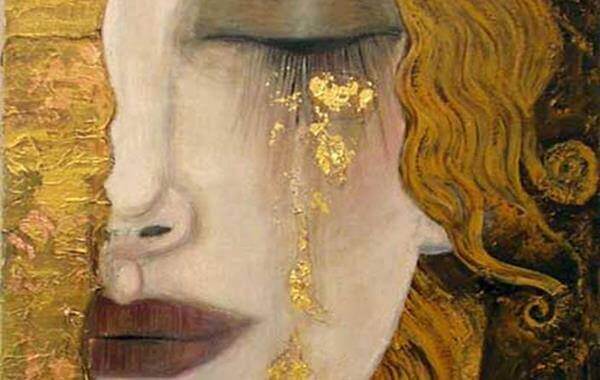Tears have an important biological function: they cleanse our eyes, allow us to have a clearer vision and are responsible for the oxygenation of the cornea, they also function as natural lubricant and contain antibacterial compounds that protect us from infections.
Tears also act as indicators of injury in our body, activate mechanisms for cells specialized in defense and healing processes to go to the area to repair it: that is, they have a direct relationship with our immune system.
“If under no circumstances has your life hurt you, do you expect them to heal and stop opening?
-Alessandro Mazariegos-
But tears aren’t just physiological. In fact, most of us see them as an expression of emotional content. The person weeps out of great sadness, gigantic fear or happiness. The person cries because he feels.
Crying is a subjective manifestation that has, on the one hand, a communicative function: to express to others what we feel, trying to awaken in them a sense of solidarity; on the other hand, tears have a therapeutic purpose because they relieve pain. accumulated tensions in daily life.
Crying is an emotional process that can have different origins, crying exceeds our need for control and, therefore, as much as we want to avoid it, sometimes we end up crying, crying indicates uncontrollability, but at the same time breaks. by a barrier of expression.
Indeed, there are two distinct areas in the brain: a prefrontal area, responsible for executive tasks such as reasoning, decision-making and where the will is, and another area whose function is to cultivate reflex acts, which are precisely automatic and involuntary. Emotions come from the latter area, which in turn is the most primitive area of the brain.
You can cry by chopping an onion, which simply confirms the normal state of the odor associated with the tear glands. We also cry on special occasions, when the causes obey the disease. This type of condition is known as pathological pleures.
Advanced research from several scientists reveals that crying releases substances such as endorphins, adrenocotrophin, prolactin and magnesium and potassium salts, responsible for high levels of distress and arousal in our body. Soon after, we live in a state of relaxation and peace In addition, when we cry, tears act as a pain-reducing pain reliever.
Crying is triggered by high-intensity negative moods, such as tension, anger or anxiety, but also by very strong positive emotions, such as intense joy, in any case what we feel is the feeling that the fact presented to us is very great.
Eliminating crying is detrimental to your health. In most cultures, seeing men cry is not well accepted, as this gesture is supposed to be a weakness, so men in particular tend to suppress their emotions, unlike women who cry easily.
The origin of such perception is due to erroneous models of education with “criteria”. Exist. Containing tears increases frustration, aggression and blockages.
In the face of the loss of a loved one, for example, a deep sadness arises: a process of grief in which the best help is to cry, is part of life. When not resolved and repressed, the consequence is the onset of diseases, as there is a process of somatization by the suppression of emotional pain, so crying is healthy when it is proportional to the reason that triggers crying.
On the other hand, crying makes no sense when the causes that cause it are unknown, and is accompanied by lack of sleep or appetite, weight loss, demotion and even desire to die, situations that can arouse suspicions of an emotional disorder. to which special attention should be paid, as it requires professional treatment.
While the physiological processes involved in the mechanism of crying and the psychological elements involved are known, there are aspects that are unknown and therefore remain a mystery. Crying seems to be an exclusively human characteristic; no other species mourns your emotions.
Some theories indicate that the most basic crying is the result of physical pain, while the more complex ones say that it is the evolutionary result of a type of nonverbal communication that seeks the help of others, this can be seen, for example, in the crying of a baby requesting the attention of his mother.
In any case, the truth is that crying, under normal conditions, is an act of liberation, and that is because it allows you to express feelings and emotions beyond words, there are forms of pain that do not allow speech, but require a physical gesture. . It is crying: a bodily gesture that leads to a state of peace when it is spontaneous.

